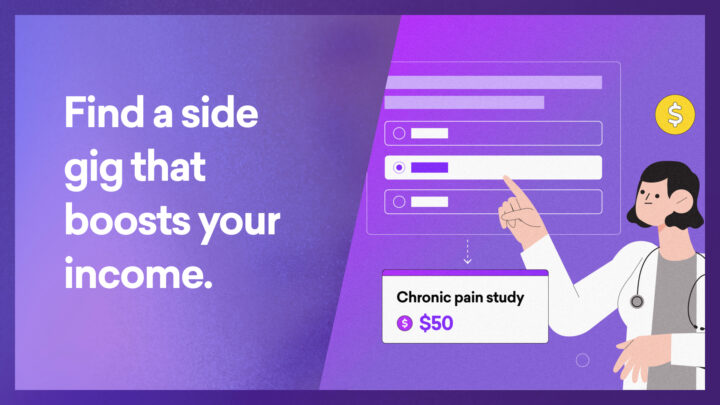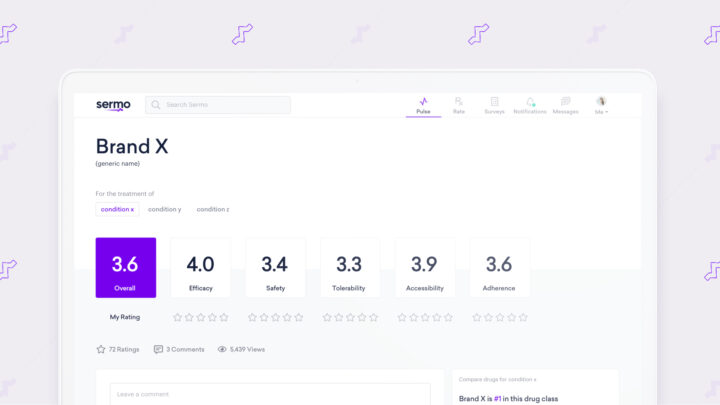
The medical device sector plays a vital role in the healthcare industry, providing equipment that simplifies the prevention, diagnosis, and treatment of diseases and illnesses. In a recent medical devices industry overview, the global market for medical devices was valued at $434.2 billion in 2021, and experts estimate it will reach $625.3 billion by 2027.
Trends in medical technology are constantly evolving; in fact, findings from our recent HCP Sentiment Survey results show that a whopping 43% of physicians worldwide seek information about emerging medical device technologies at least once per week. A further 35% look for information at least monthly.
This guide will examine how staying on the pulse of medical device industry trends as they emerge can enable pharma companies to better engage and meet the needs of physicians.
Physician Trends in Medical Technology
The medical device industry has always been heavily reliant on hospital-based physician support. But, what do physicians really want from medical device companies? We conducted an HCP Sentiment Survey to find out. We gathered responses from over 200 hospital-based physicians in eight countries across eleven specialties, each with between 3 and 30 years of experience. Here’s what physicians said they want from today’s medical devices.
1. Physician Access
In the past, it has been the norm for sales reps to make regular HCP visits to promote their medical device products and services. However, our survey revealed that reps now have increasingly limited hospital access:
- Reps only have full access to around 45% of hospitals in America, 49% in Europe, and 26% in Asia-Pacific.
- Reps have only limited access to 55% of hospitals in America, 48% in Europe, and 70% in Asia-Pacific.
- Reps have no access at all in between 2-4% of hospitals globally.
2. Physician Engagement
As the world is becoming increasingly digital, the way physicians prefer to communicate with medical device sales reps is changing. Our survey revealed that quick and easy access to information is the most important factor, and that HPCs prefer a hybrid approach (both online and in-person) when engaging with medical device sales reps. Here’s how the stats pan out globally:
- European physicians are the most open to in-person meetings, with 39% of physicians saying they would prefer to meet sales reps in a physical setting. However, hybrid communications are still more popular, being favored by 44%.
- Only 22-24% of physicians in America and Asia-Pacific would be onboard with in-person meetings only, with 66-67% preferring a hybrid strategy.
3. Physician Support
When asked unprompted, one-third of physicians across all regions said they expect the medical device industry to provide better support/service for HCPs. Globally, 1 in 4 physicians say that field force knowledge is very important when interacting with medical device companies. In addition, our survey demonstrated there is also a growing demand for:
- Access to information on demand (91% globally)
- Personalized interactions (88% globally)
- Customized content based on individual physician needs (88% globally)
- Consistency in the field force (88% globally)
- Integration of touchpoints (81% globally)
- Single point of contact (78% globally)
Given physician preferences for a blend of in-person and online strategies, this presents opportunities for pharma companies to build better communication systems and resource libraries that physicians can access as and when they need information or have questions.
4. Physician Training
The top three ways physicians globally prefer to learn about medical device technologies and procedures are:
- Medical congresses/meetings
- Physician peers
- Sales reps
Video tutorials and online training are the most popular way to learn about medical device technologies (36% of physicians), closely followed by clinical trial data (30% of physicians). Virtual training, in particular, is becoming an increasingly popular method for physicians and medical students to learn new techniques and master the use of pioneering medical technologies. Our survey revealed that globally, an average of 63% had taken digital or virtual training in the last 12 months.
Medical Device Industry Trends in 2022
The future of medical devices is heading down an increasingly digital path, encompassing advances in intelligent technology, machines, and equipment that deliver services beyond the devices themselves.
In addition, the information physicians are looking for regarding medical devices and the way they want to engage with pharma is changing. As a result, companies in the medical device sector must adapt their approach in order to optimize their go-to-market strategy.
Let’s start with an overview of the top medical technology trends most likely to transform the industry in 2022, before taking an in-depth look at physician trends and how to adapt your strategies to accommodate their needs.
The Future of Medical Devices
Manufacturers of medical devices must anticipate demand and supply products that meet physician needs if they are to attract and retain contracts. These are the most important factors to bear in mind in 2022 and beyond.
1. Cybersecurity Threats
Healthcare is one of the sectors most vulnerable to cyber attacks. Data breaches have severe implications, and the ability to update medical devices is vital in maintaining security. Yet, many critical devices like pacemakers and insulin pumps have been recalled by the US Food and Drug Administration (FDA) due to security issues. Plus, according to the Medical Device Network, 40% of medical devices are too outdated for security updates.
The FDA is already holding manufacturers accountable for security-related issues. To ensure effective cybersecurity, future medical devices must incorporate robust security measures whenever data is exchanged.
2. 3D Printing
The 3D printing industry has boomed in recent years. Currently sustaining an aggressive growth rate of around 20% per year, the market value for 3D printed medical devices is expected to reach 2.9 billion dollars by the end of 2022 and is projected to be worth 11.5 billion dollars by 2032.
As printer capabilities continue to advance, we’re likely to see medical device trends shift, with pharma manufacturers producing an ever-increasing range of 3D printed objects, including surgical instruments, implants, human organs, and full prosthetics.
3. Wearable Health and Fitness Technology
In 2022 and beyond, data from wearables like watches and fitness trackers will begin to play a more significant role in patient care. In fact, there were 929 million connected wearable devices worldwide, and that number is expected to exceed one billion this year. Even for those without known medical conditions, wearables help promote overall health and detect early warning signs of underlying problems before more severe symptoms become apparent.
4. 5G Technology
5G (fifth-generation wireless) technology is beneficial in the healthcare sector as it facilitates high-speed reliability in data management and transfer, facilitating enhanced physician collaboration, regardless of location. 5G networks also allow physicians to track patient movements, offer telehealth services, and perfect remote surgery techniques.
5. Medical Robots
Med tech industry trends reveal a growing interest and increased funding available for medical robots in the healthcare sector. According to recent research, the global medical robot market will reach $12.7bn by 2025. The types of tasks that medical robots currently perform are varied. Examples include:
- Surgical precision
- Infection reduction
- Therapeutic support
- Transportation and logistics
It’s expected that future medical devices relying on robotic technology will be able to perform much more complex tasks in the near future, like radiation therapy and advanced radiosurgery techniques.
6. Minimally Invasive Devices
The demand for minimally invasive surgical devices is set to rise, propelled by significant strides in technology and consumer demand for increased safety, lower risk factors, and reduced recovery times. With a market value estimated to reach $94.42 billion by 2030, manufacturing contractors will need to shift some of their focus onto catering to the minimally invasive market to stay ahead of medical device industry trends, keep up with demand, and remain competitive.
7. Genomic Medicine
Genomic medical devices are already useful in helping physicians provide faster and more effective treatment options, particularly in oncology, pharmacology, rare and undiagnosed diseases, and infectious diseases. A better understanding of genetics promises a future of customized and more precise medical treatments, so Med Tech industry trends are likely to focus on genomic medical device development more and more.
Supply Chain Impacts on MedTech Industry Trends
It’s impossible to discuss medical device trends or the future of medical devices without considering the significant disruption to the supply chain and logistics over the last couple of years.
The industry was hit particularly hard by problems triggered by the COVID-19 pandemic. Therefore, supply chain resilience is likely to remain a primary consideration for hospitals when selecting pharma manufacturers and distributors of medical devices.
While America is likely to remain the world’s largest medical device market, Asia-Pacific and Western Europe markets are expected to achieve a compound annual growth rate (CAGR) of 4.09% and 7.4%, respectively.
Keep Your Finger on the Pulse of Med Tech Industry Trends
One of the main findings of our global survey was that physicians rely on their peers for information on new and existing technologies. For companies looking to better engage and assist physicians in the field, industry-specific channels like Sermo can provide a significant advantage when it comes to peer-to-peer relations.
Sermo is the original medical social network that empowers the medical community. Our dedicated platform is home to more than 1.3 million healthcare professionals across 150 countries. Every day, thousands of Sermo members from diverse backgrounds and experiences exchange expertise and knowledge with each other. Leverage these insights and online discussions to keep your finger on the pulse of emerging medical device industry trends.
We turn physician experience, expertise, and observations into actionable insights for the global healthcare community. Engaging with more than 1 million HCPs across 150 countries, we provide physicians with a social platform that fosters impactful peer-to-peer collaboration & discussions about issues that are important to them and their patients. Sermo offers on demand access to physicians via a suite of proprietary technology to provide business intelligence that benefits pharmaceutical, healthcare partners and the medical community at large.
Interested in learning more? Check back any time and follow us on Facebook, Twitter and LinkedIn for the latest and greatest in healthcare insights.
To explore our exclusive business solutions, please visit us at sermo.com/business or email us business@sermo.com.








